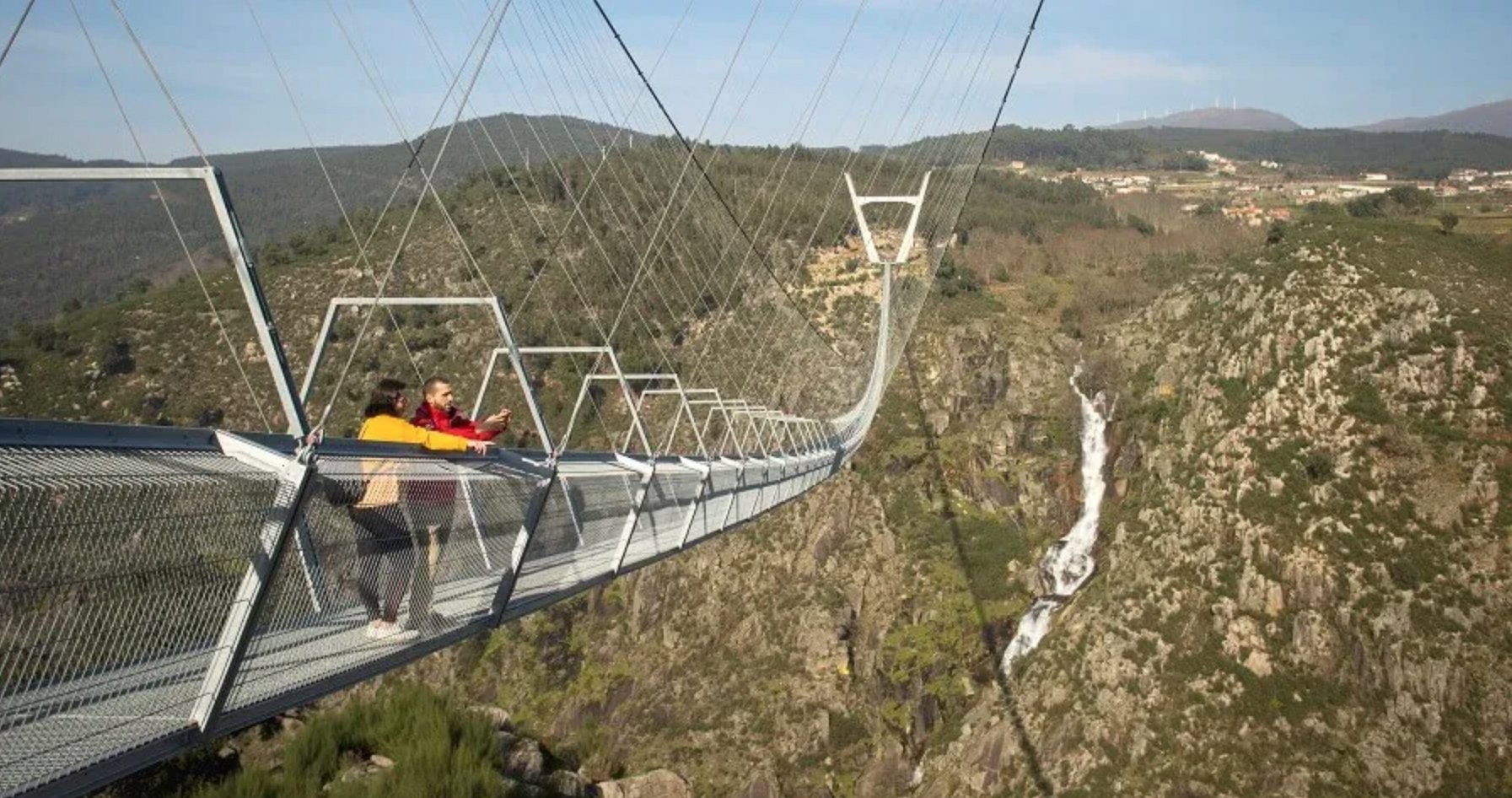A journey through Portugal’s Northern Trails
https://www.essential-algarve.com/discover/essential-discovers-the-walking-trails-of-aguda-and-the-skies-of-arouca/
The development throughout Europe of railways in the second half of the 19th century made it possible to escape the pollution and noise of city life and enjoy excursions to the seaside.
The citizens of Porto followed the fashion – the wealthier built comfortable villas within walking distance of the beach, adding a new kind of life to fishing villages.
On a sparkling, cloudless day in February, with winter considering capitulation to spring, Essential Algarve boarded the train at Porto’s flamboyant Beaux-Arts São Bento railway station.
The 25-minute journey south to Espinho enchants with a dramatic crossing of the Douro River, a stirring view across port wine warehouses to Porto’s historic city centre, the architectural eccentricities of Miramar and Granja on either side of the track, and, in the final stretch before reaching Espinho, a railway canters alongside sand dunes and the ocean.
ESPINHO BOARDWALK ©Jayne Dyer
Espinho has the surprising distinction of being built as a grid, like New York. Street 19, for example, is Espinho’s 5th Avenue! The station is located a minute away from the ocean promenade with its striking Solário Atlântico saltwater outdoor swimming pool, designed by Eduardo Martins and Manuel Passos like a great Modernist ocean liner, opened in 1943 when Portugal was one of the few European countries not to be embroiled in war. Espinho also hosts an international film festival, FEST, a cradle for new directors.
The last cafés recede and the promenade gives way to a boardwalk that snakes across dunes and through sea grasslands dotted with wild flowers. The ocean air is energising and so are the boardwalk’s users: brisk dog walkers, even brisker joggers, the occasional cyclist. An iron-willed bather emerges from the rollers, ignored by the children playing with a ball, but greeted ecstatically by his dog. Wooden windbreaks draw rhythmic patterns in the sand. On the horizon, a cargo ship steams north towards the container port at Leixões.
Photo: Jayne Dyer
Walking at good speed, it takes about an hour to reach the village of Aguda. Families and young couples stroll past single-storied tiled fishermen’s cottages. Several fishing boats drawn up on the beach spew the tools of their trade, nets and pots. Groups of elders sit on chairs and contemplate. A pier juts out into the ocean, a small lighthouse at its extremity. In stormy weather, breakers crash over the top in a choreography dissonant and violent.
There are plenty of restaurants to choose for lunch, but we have a special destination in mind. Ela’s Bar is fisherman’s cool, definitely the best bar in town, presided over by Mário the dynamic maestro. Fish soup is a must here and the tuna pâté with rustic bread equally memorable. Mário suggests we try their new wine, Novas Rota, a crisp white Douro from Quinta da Carregosa – perfect after the boardwalk exercise.
With a to-die unobstructed view of the beach and ocean beyond, Ela’s Bar is decorated with seaside paraphernalia plus a colourful mural of an endearing octopus. On the promenade, people drink beers, watching the afternoon light turn to shades of gold as the sun dips towards the ocean.
CAPELA DO SENHOR DA PEDRA
Aguda can also be reached from Porto along ocean-hugging cycle paths, past the Capela do Senhor da Pedra, a 17th-century chapel perched on a rocky headland. Heading north, we discover Vila do Conde and Viana do Castelo, fine port towns with expansive beaches, equally accessible and an entire other story.
And here is an idea for lovers of strong sensations. Less than an hour’s drive from central Porto, the Arouca Geopark is a vast UNESCO natural park with 41 sites of geological interest – referred to as ‘geosites’ – including the Ordovician giant trilobite fossils of Canelas, the largest in the world! But the star attraction of the Geopark is the 516 Arouca suspension bridge, so named for its 516-meter span. Inspired by graceful Inca suspension bridges and one of the longest pedestrian suspension bridges anywhere, the 516 Arouca soars 175 meters above the turbulent Paiva River, linking the steep granite escarpments of the gorge. The daring will experience the giddy sensation of flying through landscape, like one of the short-toed snake eagles you may be fortunate enough to see.
The bridge can be accessed by the Paiva Walkways, which are sinuous and rich in biodiversity. Visitors must book in advance, don a pair of ‘sensible’ shoes, and will always be accompanied by a guide. Crossing the 516 Arouca bridge is incredibly exhilarating. Don’t look down, keep your gaze on the horizon! A methodology for life perhaps?




